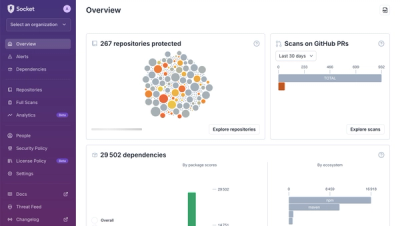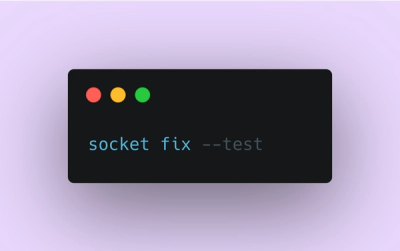
Research
Using Trusted Protocols Against You: Gmail as a C2 Mechanism
Socket uncovers malicious packages on PyPI using Gmail's SMTP protocol for command and control (C2) to exfiltrate data and execute commands.
DataTable renders collections (an array of hashes or ActiveRecord models) as HTML tables.
gem install data-table
or, in your Gemfile
gem 'data-table'
the normal usage is to call the DataTable.render() method and pass it a collection. The method also takes a block which can be used to configure the table. The column method takes a symbol for the first parameter. If the symbol matches a key in the @collection, then that value is printed in the cell.
DataTable.render(@collection) do |t|
t.column :column_1, "Title"
t.column :column_2, "Title 2"
end
Sometimes you want to use Ruby code to customize the value for a cell. This can be done by passing a block to the .column method
DataTable.render(@collection) do |t|
t.column :column_id, "Title" do |value, row, row_index, column, column_index|
"The value is: #{value}"
end
end
You don't need to pass in all of the block parameters; just the ones up to the one you need.
Tip The column_id doesn't need to be an actual key in the collection. You can just make up an arbitrary column id and use the block renderer to customize the value for a column.
id: the html id
title: the title of the data table
subtitle: the subtitle of the data table
css_class: an extra css class to get applied to the table
empty_text: the text to display of the collection is empty
display_header => false: hide the column headers for the data table
alternate_rows => false: turn off alternating of row css classes
alternate_cols => true: turn on alternating of column classes, defaults to false
It is possible to setup totals & subtotals. Total columns take the name of the column that should be totaled. It is also possible to specify multiple total and subtotal columns.
They also take a default aggregate function name and/or a block.
DataTable.render(@collection) do |t|
t.column :column_1, "Title"
t.column :column_2, "Title 2"
t.column :column_3, "Title 3"
# Use a default function and no block.
t.total :column_1, 0, :sum
# Pass only a block and an index
t.total :column_2, 1, do |values|
# custom methods here
end
# Pass a default function and a block
t.total(:column_3, 2, :sum) do |aggregate_total|
format_money(aggregate_total)
end
end
Possible default functions: :sum, :avg, :min, :max
SubTotals work in a similar way to Totals. The main difference is that you need to call group_by to specify the different subtotal groupings.
When configuring more than one subtotal column the index parameter is required
DataTable.render(@collection) do |t|
t.column :column_1, "Title"
t.column :column_2, "Title 2"
t.column :column_3, "Title 3"
t.column :column_4, "Title 4"
t.group_by :column_1
t.subtotal :column_2, 0, :sum
t.subtotal :column_3, 1, :max
end
It is possible to use group_by on its own without subtotaling.
It is also possible to combine multiple group_by with multiple subtotal. In this
scenario you must specify a level for each group by passing an integer value.
When only specifying a group you may omit level.
DataTable.render(@collection) do |t|
t.column :column_1, "Title"
t.column :column_2, "Title 2"
t.column :column_3, "Title 3"
t.group_by :column_1, 0
t.group_by :column_2, 1
t.subtotal :column_3, 0, :sum
t.subtotal :column_3, 0, :sum
end
You can also combine subtotals & totals in the same table.
Nearly all of the code for this was written by @smerickson, and later gemified by @sixfeetover.
FAQs
Unknown package
We found that data-table demonstrated a not healthy version release cadence and project activity because the last version was released a year ago. It has 2 open source maintainers collaborating on the project.
Did you know?

Socket for GitHub automatically highlights issues in each pull request and monitors the health of all your open source dependencies. Discover the contents of your packages and block harmful activity before you install or update your dependencies.

Research
Socket uncovers malicious packages on PyPI using Gmail's SMTP protocol for command and control (C2) to exfiltrate data and execute commands.

Product
We redesigned Socket's first logged-in page to display rich and insightful visualizations about your repositories protected against supply chain threats.

Product
Automatically fix and test dependency updates with socket fix—a new CLI tool that turns CVE alerts into safe, automated upgrades.